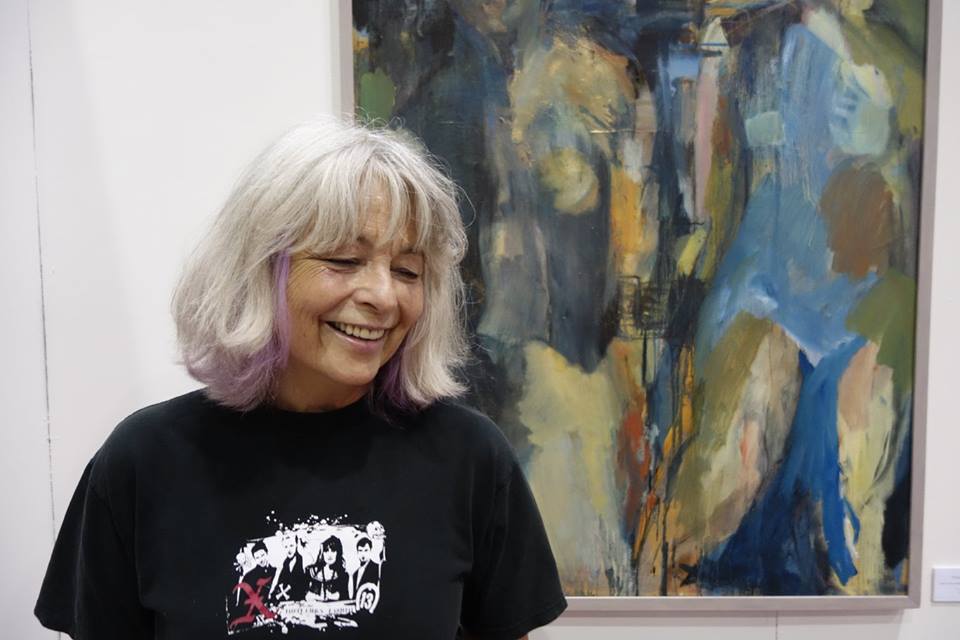
Female artists are getting buried. Beneath the onslaught of male-dominated gallery openings and exhibitions, the work of photographic artist and activist Carolyn Campbell sounds a rallying cry to creatives everywhere: address the gender inequality rampant in the arts community.
Closing April 17 at LACE, (en)Gendered (in)Equity: The Gallery Tally Poster Project includes 450 international artists who tackle this subject, Campbell among them. All posters are 24” x 36,” and are designed to address the question as to why female-identified artists are still valued so much less than male-identified artists. Gallery Tally is a crowd-sourced, social engagement project created by Micol Hebron to examine and question the ongoing gender imbalance in the art world.
Campbell has four works in this exhibition, which have been a part of the show’s traveling itinerary from Chicago to Santiago, Chile.
“I was invited to create works illustrating the ratio of male to female artists in four galleries: two in New York and two in Paris,” Campbell relates. In her contributions to the exhibition, she meshed subjects she is passionate about – social justice, culture, art, and architecture.
“I was excited to be part of a show that speaks to gender parity. It afforded me the opportunity to examine how, when I was promoting women artists, was I able to successfully increase their visibility in the marketplace, face any challenges, and how it affected my own creative expression,” she states.
For Gallery Tally, Campbell’s works are posters depicting Marlborough Chelsea, a satellite of the Marlborough Gallery, one of the world’s leading artist reps, and Kerry Schuss Art, both located in New York. For her Paris representations, she chose Galerie Thaddaeus Ropac, and Galerie Hussenot.
The images she uses to craft these pieces are photos of 19th century sculptures which Campbell made in the Père Lachaise Cemetery in Paris. The carefully curated images have expressions that exhibit frustration, sorrow, and exasperation in regard to the poor tally of female to male artists exhibited at these galleries.
Along with expressing this important social subject, her art for the exhibition reflects a 20-year span of Campbell’s work chronicling the funerary images of Père Lachaise in written word and photographs. Her elegiac photos make the tomb sculptures, which often mark the final resting spots of some of the world’s most famous artists, seem alive, as if the stone figures were merely staying still waiting to be photographed. With mossy green lichen and leaves, golden streaks of sunlight, and red tinged trees contrasting with the silvery grey statues, the photos feel almost archetypal.
“The female figure in funerary iconography is traditionally linked to the Seven Virtues: Faith, Hope, Charity, Temperance, Prudence, Fortitude and Justice,” Campbell says. “The images that I chose for the exhibition are powerful examples of how women embody some of the deepest qualities of the human condition.”
From community portraits to architectural forms to her cemetery study, Campbell exhibits an immediacy and grace that brings her subjects to life. There is irony in the fact that her work in Père Lachaise creates the fluidity of captured motion in her depictions of these graceful sculptures. From drought-riven landscapes in her recent series CA Route 5 to fluid images of jellyfish in her work Ocean Sentinels, she is all about suffusing the still with movement and capturing movement in frozen grace.
Born in Washington, D.C., now a resident of West Hollywood, Campbell began taking photographic portraits and urban still-life pieces when her mother gifted her with a Rolleicord camera while still in art school. Her work with other artists at UCLA and the Corcoran Gallery of Art in Washington led her to explore the relationship between the arts and political culture in her photography.
Whether tackling political subjects through her posters in the (en)Gendered (in)Equity: The Gallery Tally Poster Project, or narrating the subject of California’s historic drought, Campbell brings a keen eye and a sharp wit to her work.
To experience the powerful posters at Gallery Tally and get a taste of Campbell’s oeuvre, visit LACE at 6522 Hollywood Boulevard, Los Angeles, CA 90028 before its closing this weekend.
- Genie Davis; Photos: Laura Grover




























